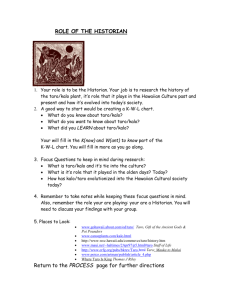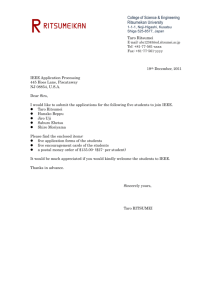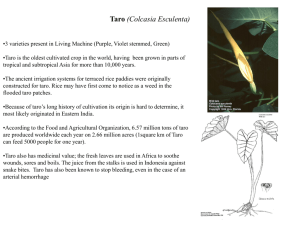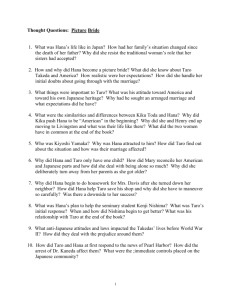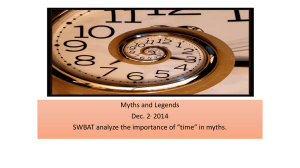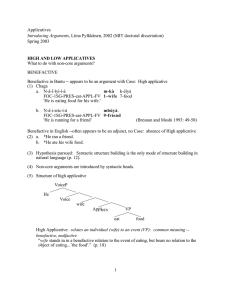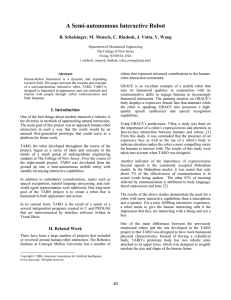Queen Emma Taro - Training the Next Generation of Molokai Native
advertisement
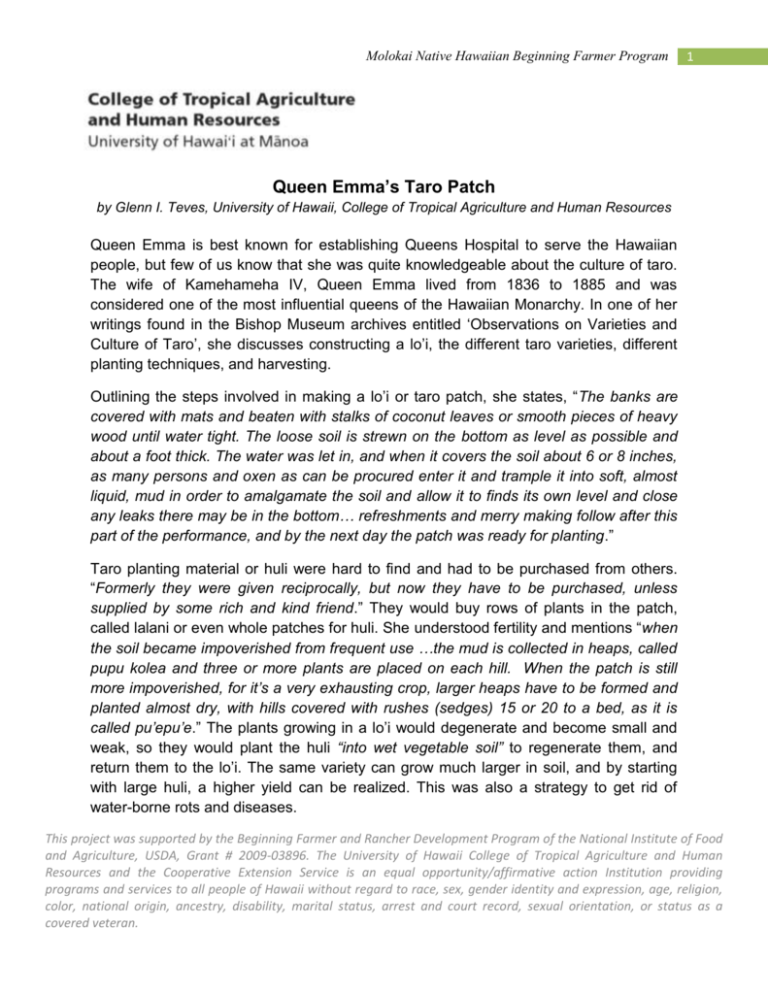
Molokai Native Hawaiian Beginning Farmer Program 1 Queen Emma’s Taro Patch by Glenn I. Teves, University of Hawaii, College of Tropical Agriculture and Human Resources Queen Emma is best known for establishing Queens Hospital to serve the Hawaiian people, but few of us know that she was quite knowledgeable about the culture of taro. The wife of Kamehameha IV, Queen Emma lived from 1836 to 1885 and was considered one of the most influential queens of the Hawaiian Monarchy. In one of her writings found in the Bishop Museum archives entitled ‘Observations on Varieties and Culture of Taro’, she discusses constructing a lo’i, the different taro varieties, different planting techniques, and harvesting. Outlining the steps involved in making a lo’i or taro patch, she states, “The banks are covered with mats and beaten with stalks of coconut leaves or smooth pieces of heavy wood until water tight. The loose soil is strewn on the bottom as level as possible and about a foot thick. The water was let in, and when it covers the soil about 6 or 8 inches, as many persons and oxen as can be procured enter it and trample it into soft, almost liquid, mud in order to amalgamate the soil and allow it to finds its own level and close any leaks there may be in the bottom… refreshments and merry making follow after this part of the performance, and by the next day the patch was ready for planting.” Taro planting material or huli were hard to find and had to be purchased from others. “Formerly they were given reciprocally, but now they have to be purchased, unless supplied by some rich and kind friend.” They would buy rows of plants in the patch, called lalani or even whole patches for huli. She understood fertility and mentions “when the soil became impoverished from frequent use …the mud is collected in heaps, called pupu kolea and three or more plants are placed on each hill. When the patch is still more impoverished, for it’s a very exhausting crop, larger heaps have to be formed and planted almost dry, with hills covered with rushes (sedges) 15 or 20 to a bed, as it is called pu’epu’e.” The plants growing in a lo’i would degenerate and become small and weak, so they would plant the huli “into wet vegetable soil” to regenerate them, and return them to the lo’i. The same variety can grow much larger in soil, and by starting with large huli, a higher yield can be realized. This was also a strategy to get rid of water-borne rots and diseases. This project was supported by the Beginning Farmer and Rancher Development Program of the National Institute of Food and Agriculture, USDA, Grant # 2009-03896. The University of Hawaii College of Tropical Agriculture and Human Resources and the Cooperative Extension Service is an equal opportunity/affirmative action Institution providing programs and services to all people of Hawaii without regard to race, sex, gender identity and expression, age, religion, color, national origin, ancestry, disability, marital status, arrest and court record, sexual orientation, or status as a covered veteran. Molokai Native Hawaiian Beginning Farmer Program 2 In securing huli, she mentions that “plants should be selected from the varieties best adapted to the locality and nature of the soil.” Queen Emma mentions her favorite taro varieties and proceeds to name over 40 varieties. She indicated that “Piko kea and Ipuo-Lono were the most productive.” Next came the hardy Apuwai, then Haokea Piko (Piko Ke’oke’o), the three Ka’i, and the tabued dark Pi’i Ali’i. Others included Ele ele naioea, and “the old favorite Lihilihi molina”, which was thought to be extinct but recently found in Hanapepe, Kauai. Of those mentioned, about half are either not found today or are synonyms for some of the existing ones. She also mentions that after cooking taro in the imu, it was eaten as-is in many places, while other places were pounded into poi. She observed differences in climate on the maturing of taro, noting that taro grown in Honolulu matured much quicker that those grown in the valleys. Her writings are very detailed and attest to the deep understanding of taro growing by the ancient Hawaiians, even royalty. Today, the more we learn about taro, the more we realize how little we know. And try finding a place to grow taro in Honolulu!?!? This project was supported by the Beginning Farmer and Rancher Development Program of the National Institute of Food and Agriculture, USDA, Grant # 2009-03896. The University of Hawaii College of Tropical Agriculture and Human Resources and the Cooperative Extension Service is an equal opportunity/affirmative action Institution providing programs and services to all people of Hawaii without regard to race, sex, gender identity and expression, age, religion, color, national origin, ancestry, disability, marital status, arrest and court record, sexual orientation, or status as a covered veteran.
